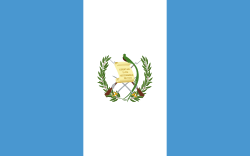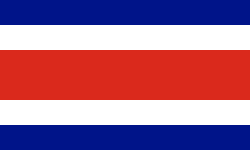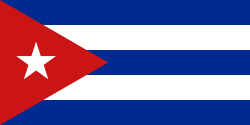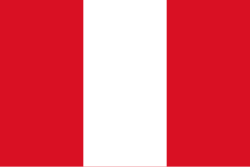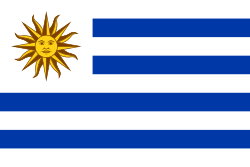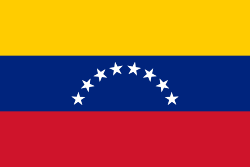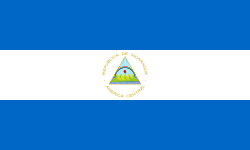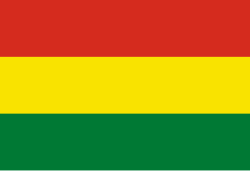Hispanoamerika
Jako Hispanoamerika (španělsky Hispanoamérica) se označují souhrnně latinskoamerické (iberoamerické) země Střední Ameriky a Jižní Ameriky, ve kterých se mluví španělsky. Nepočítá se sem tedy zejména portugalsky mluvící Brazílie (Lusoamerika). Pojem Hispanoamerika se občas nepřesně chápe jako synonymum k pojmu Iberoamerika nebo Latinská Amerika.
Obyvatelstvo této části světa tvoří převážnou část hispanofonních obyvatel mimo Španělska, kam přináleží obyvatelé dřívějších španělských kolonií na celém světě. Jedná se přibližně o 380 miliónů lidí. Kromě amerických států se za hispanofonní (španělsky mluvící) považují i Rovníková Guinea a Západní Sahara v Africe a částečně i Filipíny v Asii. Mimo hispanofonní země tvoří španělsky mluvící obyvatelstvo významnější část populace států Belize a USA (zhruba 44 100 000 lidí a 14,8% podíl Hispánců ve Spojených státech).
Názvy měst a míst
Při zakládání nových osad a poznávání území pojmenovávali Španělé města, hory a jiné geografické prvky často podle různých světců nebo podle názvů španělských měst (např. San Juan, San José, San Antonio, Santa Ana, San Salvador, Santo Domingo, Santiago, San Diego a Córdoba, Granada, Leon, Cartagena, Guadalajara).
Přehled států
Poznámky
- ↑ Status oficiálního jazyka má v Bolívii kromě španělštiny 36 indiánských jazyků
- ↑ Mexiko nemá ve své ústavě stanoven žádný oficiální jazyk, španělština jím ale de facto je
- ↑ Status oficiálního jazyka má v Panamě kromě španělštiny i 5 domorodých jazyků
- ↑ Španělština je oficiálním jazykem Paraguaye spolu s guaraní
- ↑ Peru má 3 oficiální jazyky: španělština, kečuánština a ajmarština
- ↑ Druhým oficiálním jazykem na Portoriku je angličtina
Reference
- ↑ hodnoty populace států přebrány ze stránek CIA Archivováno 27. 9. 2011 na Wayback Machine. (anglicky)
- ↑ hodnoty rozlohy států přebrány ze stránek CIA Archivováno 9. 2. 2014 na Wayback Machine. (anglicky)
- ↑ údaje pro rok 2017 dle Mezinárodního měnového fondu (anglicky)
Média použitá na této stránce
Při zobrazení tohoto souboru lze snadno přidat orámování
The flag of the Dominican Republic has a centered white cross that extends to the edges. This emblem is similar to the flag design and shows a bible, a cross of gold and 6 Dominican flags. There are branches of olive and palm around the shield and above on the ribbon is the motto "Dios,Patria!, Libertad" ("God, Country, Freedom") and to amiable freedom. The blue is said to stand for liberty, red for the fire and blood of the independence struggle and the white cross symbolized that God has not forgotten his people. "Republica Dominicana". The Dominican flag was designed by Juan Pablo Duarte, father of the national Independence of Dominican Republic. The first dominican flag was sewn by a young lady named Concepción Bona, who lived across the street of El Baluarte, monument where the patriots gathered to fight for the independence, the night of February 27th, 1844. Concepción Bona was helped by her first cousin María de Jesús Pina.
The flag of the Dominican Republic has a centered white cross that extends to the edges. This emblem is similar to the flag design and shows a bible, a cross of gold and 6 Dominican flags. There are branches of olive and palm around the shield and above on the ribbon is the motto "Dios,Patria!, Libertad" ("God, Country, Freedom") and to amiable freedom. The blue is said to stand for liberty, red for the fire and blood of the independence struggle and the white cross symbolized that God has not forgotten his people. "Republica Dominicana". The Dominican flag was designed by Juan Pablo Duarte, father of the national Independence of Dominican Republic. The first dominican flag was sewn by a young lady named Concepción Bona, who lived across the street of El Baluarte, monument where the patriots gathered to fight for the independence, the night of February 27th, 1844. Concepción Bona was helped by her first cousin María de Jesús Pina.
Note: The color selected is «turquoise blue» (the color mentioned in the decree), as defined by Pantone.
© Giggette / Wikimedia Commons, CC BY-SA 3.0
Orthographic projection of Spanish America and percentage of Spanish speakers in the Americas.
|
Spanish America
Non-Spanish speaking countries
|
United States
Canada
|
| Flag of Bolivia* | |
|---|---|
| country | Template:I18n/Republic of Bolivia |
| used by | Bolivia |
| from | 1851 |
| until | Present |
| created by | Government of Bolivia |
| format | 15:22 |
| shape | rectangular |
| colours | červená, žlutá, zelená
flag has 3 horizontal stripes |
| other characteristics | A horizontal tricolor of red, yellow and green. |





